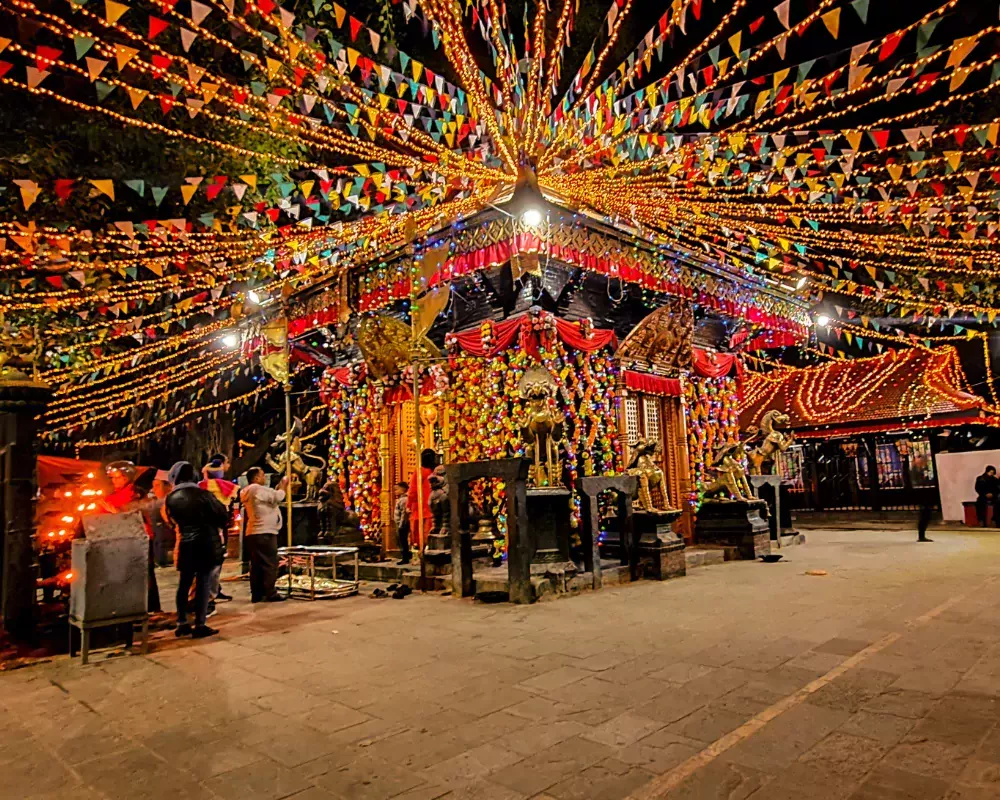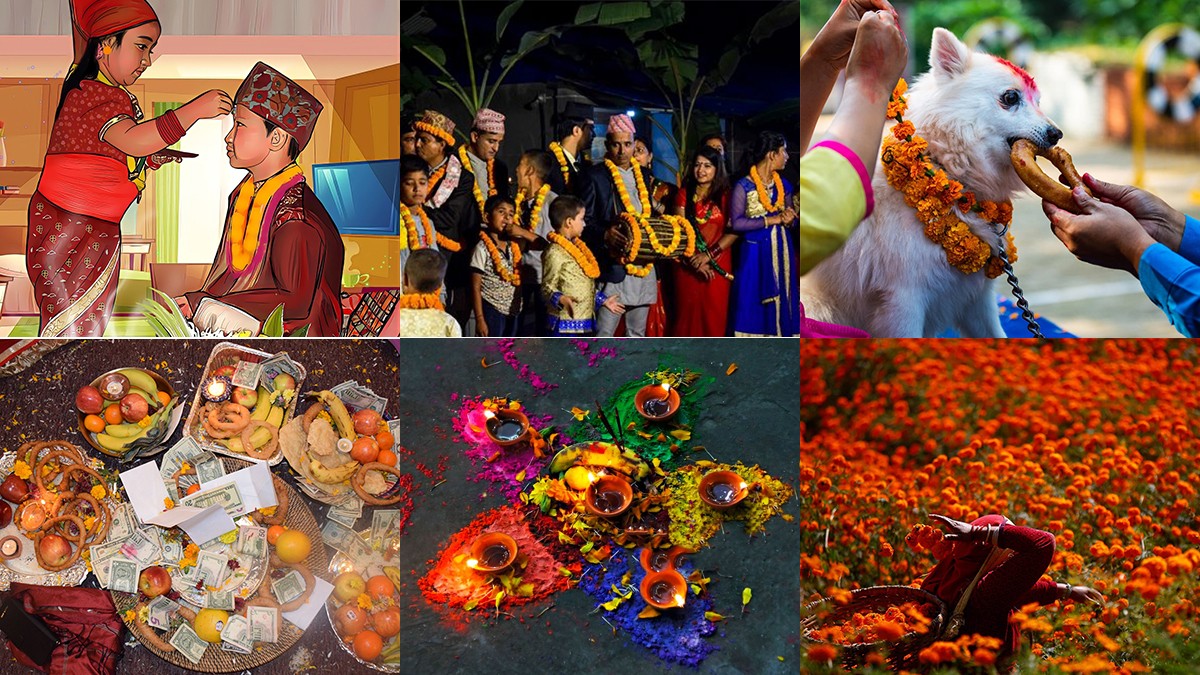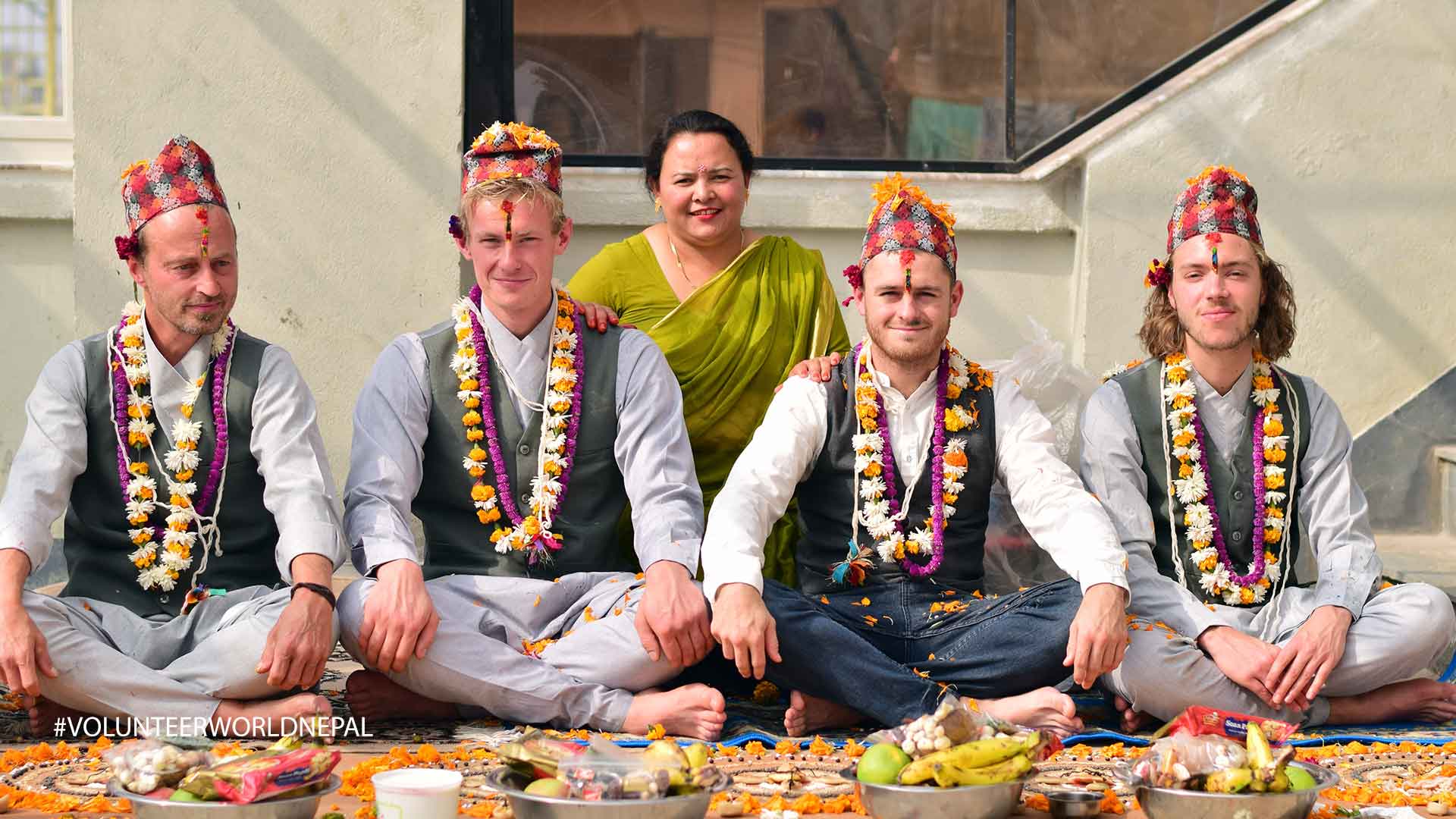Visiting Nepal During Tihar: What Can I Expect
As a traveler, you will surely have the opportunity to take part in one of the greatest celebrations. And compassionate highlights of your experience in Nepal, Tihar (the Festival of Lights). Tihar is a five-day celebration that occurs sometime in late October to early November, often coinciding with a full moon. Tihar is the second largest celebration in Nepal, following Dashain, and is essentially a national holiday. The feeling of Tihar is one of joy and excitement.

Participants during Tihar will celebrate the gods and goddesses, animals, and the relationship between brothers and sisters. The streets, temples, and homes will be aglow and bright with oil lamps and candles, but it will also be brighten in bright colors, too. Altogether, it will change the visual landscape of the towns and villages, and during Tihar, the towns and villages will be fascinating displays of joy and bright lights.
What is the Meaning and Spirit of Tihar
Tihar is also known as Deepawali in Nepal, is the celebration of the victory of light conquering darkness, and knowledge overcomes ignorance. It is a time for people to thank the Lord for the happiness of life, to live sustainably, and to reflect on the relationships that bring meaning through life. Tihar is different from most festivals because it ties spirituality to our daily lives. Tihar also conveys a sense of regard for all living beings, domesticated animals, and prioritizes family relationships. The festival is warm and emotional. During Tihar, you will be shown the generous, loving spirit of the Nepalese people. Travelers who happen to be connecting Nepal during Tihar will not be observers but part of a nation-wide festival focused on love and light.
The Five Days of Celebration
Tihar is celebrated for 5 days, each with its own object, purpose, traditions, and moments of enthusiasm.
Day 1: Kaag Tihar (Day for Worshipping Crows )
Kaag Tihar is the first day of Tihar, the day of crows. In Hindu belief, crows are the symbol of Yama, the god of death, and on this day rice, treats, and grains are set outside or on top of roofs for crows to find in their honour. Many will view this as yet another gesture of bringing to life positive energy instead of negative energy. In the morning, crows caw in the air, and small food plates are laid out in each direction. It is within this quiet richness that visitors begin to explore, really getting familiarized with the deep connection between Nepali culture and nature.
Day 2: Kukur Tihar (Worship of the Dog)
Day two, Kukur Tihar, is possibly one of the most gracious festivals that anybody could participate in. This is a day of celebrating dogs – the most loyal and true companionship one can have. On this day of appreciation, all dogs, from community city dogs to love family dogs, are celebrate. Similarly, in that they receive bright flower garlands around their neck, tika from the red powder upon their heads, to food from their owners.
Is there anything more simply sweet than seeing dogs walking around with garlands hanging from their neck, wagging their tails? For many travelers, this is the favorite day of the festival, out of kindness and compassion, and respect for all life.

Day Three: Gai Tihar and Laxmi Puja
The third day is definitely the biggest celebration. In the morning, cows are worship because they represent pure animals and indicate wealth. During this time of year, cows are commonly fed grass, fruits, or flowers with the intention of wishing/prospering the cows or anybody nearby. The evening is when this celebration begins with the sparkling festival of goddess Laxmi, goddess of wealth, good fortune, and abundance. Every household will show up with their houses cleaned with all lights, marigold garlands, and rangoli creations to signify the wealth of goddess Laxmi for this festival.
Seeing the whole neighborhood with outside houses adorned with rows of glowing diyas and twinkling lights is stellar. You can hear clusters of children and youths who will wink be singing traditional Deusi-Bhailo songs in exchange for some sweets and maybe a penny or two!
Day 4: Govardhan Puja and Mha Puja
The fourth day can hold different meanings across Nepali culture. In many Hindu households, families will have worship oxen and observe Govardhan Puja to honor nature and agriculture. While the day can also be known as Mha Puja in the Newar community as a sacre ritual for honoring and purifying the self.
The Newar culture is known for creating exquisite mandalas on the ground using powders and flowers. These mandalas are often equipped with offerings, done to instill the spirits of self-respect and balance within the creator. Tourists who find themselves in Kathmandu, especially in Bhaktapur or Patan, will see these quite interesting Newar traditions, not the least of which involves an elaborate meal that memorializes balance and renewal.
Day 5 – Bhai Tika (Prayer for Brother)
The fifth and final day of Tihar is Bhai Tika, the most sentimental day because it’s just heartwarming. Sisters will put a seven-colored tika on their brother’s forehead, and they will give their brothers candy (sweets), dried fruit, and nuts. Sisters will be praying for their brother in terms of wealth, success, and longevity. Brothers will also engage and get gifts for their sisters. Brothers will also start to prepare to protect their sister as they travel. Bhai Tika is a day for families in not only Kathmandu’s valley but across Nepal to emphasize the fraternity ties of family. Family is abundant, and love and laughter fill the homes.
For tourists who are staying with a family, this is a great day to see real Nepali love and the importance of relationships in daily life.
The Magical Atmosphere During Tihar
Tihar creates a glorious ambience in Nepal. Once evening falls, the brilliant lights of thousands of oil lamps shine brightly from windows, yard corners, and temple doors. Many streets are decorate with familiar fairy lights and paper lanterns hanging down, while the evening air has a fragrance of incense and music. Children full of festive spirit will be going from house to house singing the Deusi and Bhailo songs. Early evenings in the narrow way of Kathmandu, Patan, or Bhaktapur, it begins to feel like a Fairy Tale. In Pokhara, the lights mirrored in Phewa Lake are truly out of this world. Warmth and kindness can feel benevolent. Many times, visitors take part in the singing, dancing, and merriment, and make memories for a lifetime at the same time
Traditional Foods for Tihar
No formal celebration in Nepal would be without traditional foods, and Tihar is a very special occasion for that type of homemade food. The most famous food, a ring-shaped, sweet, crispy bread staple made of rice flour, called Sel Roti.
Some other well-known kinds of sweets are anarasa, barfi, and laddu, made of rice flour, coconut, and ghee. Families prepare special meals, fruits, and snacks to offer their guests, gods, and animals. Traveling, during Tihar, to either homes or homestays gives travelers a reason to enjoy and engage in sharing traditional tastes and practices that symbolize community and gratitude.

Best Places to Experience Tihar in Nepal
Overall, Tihar will be celebrate all over the country; however, there are great places that will present unique, lovely experiences. The Kathmandu Valley, with its ancient temples and Newar community, is a uniquely full-color experience of any festival. Bhaktapur or Patan will host Deusi-Bhailo events, where people dance in well-decorated courtyards of homes. More lakeside experiences with fire taking place at another during Tihar is a great overall experience in Pokhara, where there are beautiful reflections of lights on the water. Villages like Bandipur and Gorkha offer a different candlelight experience of more traditional and communal gatherings of families, comprising a feeling of music and food going from one to another while celebrating together. No matter where you are, Tihar is in the air, and there is a spirit of love and connection that shines through.
Travel Tips for Visiting Nepal During Tihar
Your trip to Nepal will be a fantastic experience during Tihar – with a little preparation, your trip will run smoothly. With this being a major holiday, experts recommend booking flights, bus trips, and accommodation ahead of time. Many local businesses and government offices will close for several days, and you should make your travel decision around this holiday. It’s also a good reminder that you should carry some cash because ATMs could become busy, and small shops may or may not accept cards.
Again, out of respect to the people of Tihar, when you observe rituals, ask first if you can take a picture of someone’s home. Please dress appropriately, especially if you are near someone’s home or a temple. Finally, (and best of all) be open to the experience of participation. Most people will be exceedingly friendly and may ask you to join in the festivities for their song and dance.
Conclusion
During Tihar if you visit Nepal you will feel as though you are experiencing the true culture of Nepal. During Tihar, devotion and happiness fill the heart of the country, turning into something meaningful. It runs the range from honoring animals to honoring the gods to honoring family. On the newly lit streets of old town Kathmandu, as you stare at reflections on a lake in Pokhara, or share some Sel Roti with friends in a small village, Tihar will revive the heart with brightness. Tihar is a celebration of abundance and prosperity, but ultimately tells us that good deeds, love, and respect are where brightness will always give us life.
This is not just what nepal offers, Dashain is another festival celebrat by the majority on what you want to experience. Nepal has got you cover, from hiking in the nagarjuna (one of the easier hike) to (nepal’s hardest hike), from climbing the Everest (to the top of the world) to experiencing the deep Arun Valley in the world, you can experience the best.
